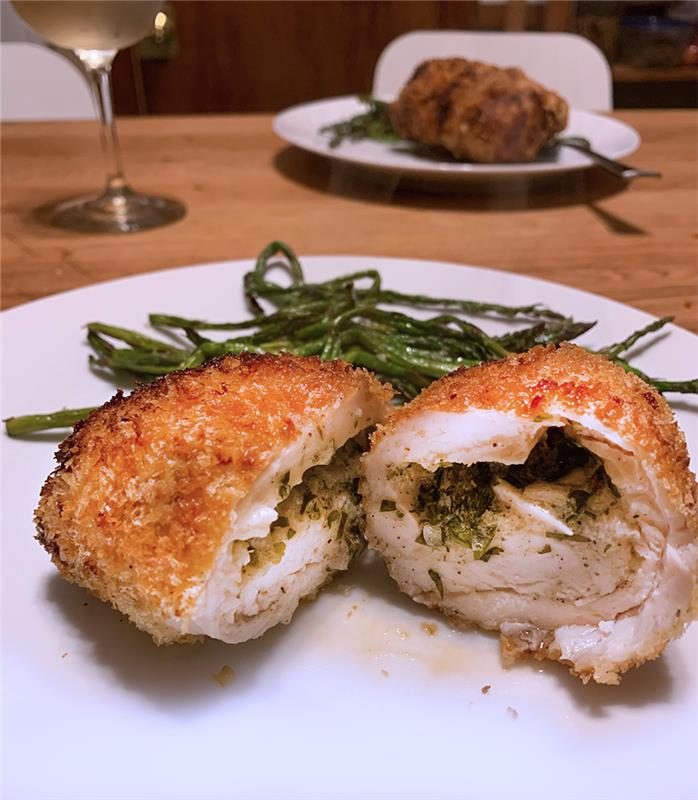
What We're Cooking: The Richness of Shakespeare | The Prompter
Shakespeare’s rich verse can present a trap to actors. It’s easy to be seduced by those delicious words. Some actors relish and savor the language so much that the audience can lose all sense of what they’re talking about. A detailed argument can become a wash of descriptive words when an actor overplays an adjective and rushes by a noun or verb. When speaking Shakespeare’s verse the most important information is relayed in the nouns and the verbs. While adjectives, usually the tastier words, convey a character’s point of view.
The idea is to use the adjectives to “season” the nouns and verbs. Think of Macbeth’s “multitudinous seas” and the “perilous, narrow ocean” from Henry V. The actor’s task is to give the word “sea” the multitudinous quality and to make the word “ocean” sound perilous and narrow.
When I was a student, Peter Francis James (PFJ) and James Bundy used the metaphor of Chicken Kiev to impart this idea of “seasoning” nouns with their own adjectives—from the inside out. With Chicken Kiev, the sauce is not served on the side or drizzled on top when the chef plates the dish. The sauce is inside the chicken-inextricably linked, elevating the humble, proletarian, chicken breast to grand, continental, bourgeois, haute cuisine.
I admit the metaphor was somewhat lost on me then. I understood the lesson, but I didn’t have a clear image of what Chicken Kiev really was. So I thought it was important to clear things up before I started teaching my first semester of Text Analysis. I’m an ambitious home cook and I’m always down for a challenge. When I took my first bite, I could almost hear PFJ’s devious whisper, “The sauce…is inside the chicken.”
For a classic presentation, you might try leaving the first wing bone attached to the breast—what they call a Frenched chicken breast or airline chicken. It’s a similar preparation to Chicken Cordon-Bleu but Chicken Kiev forgoes the ham, cheese, and Dijon mustard for a compound butter. That’s right. Just butter. Butter inside chicken.
—Austin Durant (Faculty, ’10)

Austin Durant (’10, Faculty).
Chicken Kiev
Makes four servings
About 4.5 hours largely unattended
For the Compound Butter (The Adjective)
½ cup or one stick of unsalted butter, softened
1 tablespoon of finely minced shallot
1 tablespoon of minced chives
1 tablespoon of minced parsley
1 teaspoon of minced fresh thyme
1 teaspoon of lemon juice
¼ teaspoon of black pepper
salt to taste
For the Chicken (The Noun)
4 half chicken breasts (skinless)
½ cup flour
2 eggs beaten with 1 tablespoon of water
1 cup panko breadcrumbs
kosher salt
black pepper
vegetable oil

Step 1: Prepare the Compound Butter.
Combine softened butter, minced shallot, minced herbs, lemon juice, and one teaspoon of kosher salt in a bowl. On a sheet of parchment paper, form the compound butter into a log, about the size of a stick of butter. Roll the butter in the parchment and chill until firm. About 3 hours.
Step 2: Flatten the Chicken Breasts.
Place one chicken breast in a Ziploc bag or between two pieces of plastic wrap. Pound the chicken with a mallet or rolling pin to an even thickness. Take care not to tear or chunk the meat. Remove the chicken and flatten the rest of the breasts in the same manner.
Step 3: Form the Chicken Kiev.
Place one flattened chicken breast on a sheet of plastic wrap. Season on both sides with salt and pepper. Place two tablespoons of the cold compound butter on the long side of the chicken and sprinkle a few panko breadcrumbs on top. Fold the long side of the chicken halfway up to envelope the butter and breadcrumbs. Fold the short sides in and roll the chicken once more on the long side to seal the roll. Now, roll the chicken tightly in the plastic wrap and twist the ends of the plastic to form a compact cylinder. Repeat with remaining chicken breasts and butter. Chill in the refrigerator for one hour.
Step 4: Prepare to Bread and Fry.
Prepare three shallow bowls—one with ½ cup of flour, one with the beaten eggs and one tablespoon of water, and one with the cup of panko breadcrumbs. Set a rack inside a baking tray to rest the finished chicken. Place a heavy-bottomed skillet with a ½ inch of vegetable oil over medium high heat.
Step 5: Bread and Fry.
Remove the chicken from the plastic wrap and dredge it in the flour. Shake off the excess flour then dip in the egg wash. Then coat in the panko breadcrumbs. Carefully place the breaded chicken rolls in the hot oil and fry for 5 minutes on each side or until the internal temperature reaches 165 degrees. Rest the chicken on the prepared rack for 10 minutes. Garnish with parsley and a lemon wedge. Serve with haricot verts and whipped potatoes.
Photo Credits
Jeff Biehl, Greg Keller, Mary Shultz, and Andrew Weems in Scenes from Court Life, or the whipping boy and his prince by Sarah Ruhl, directed by Mark Wing-Davey, scenic and costume design by Marina Draghici, lighting by Stephen Strawbridge, sound design by Shane Rettig, projections by Yana Birÿkova, wig design by Charles G. Lapointe, technical direction by Kelly Rae Fayton, and stage management by James Mountcastle. Photo © Carol Rosegg, 2016.